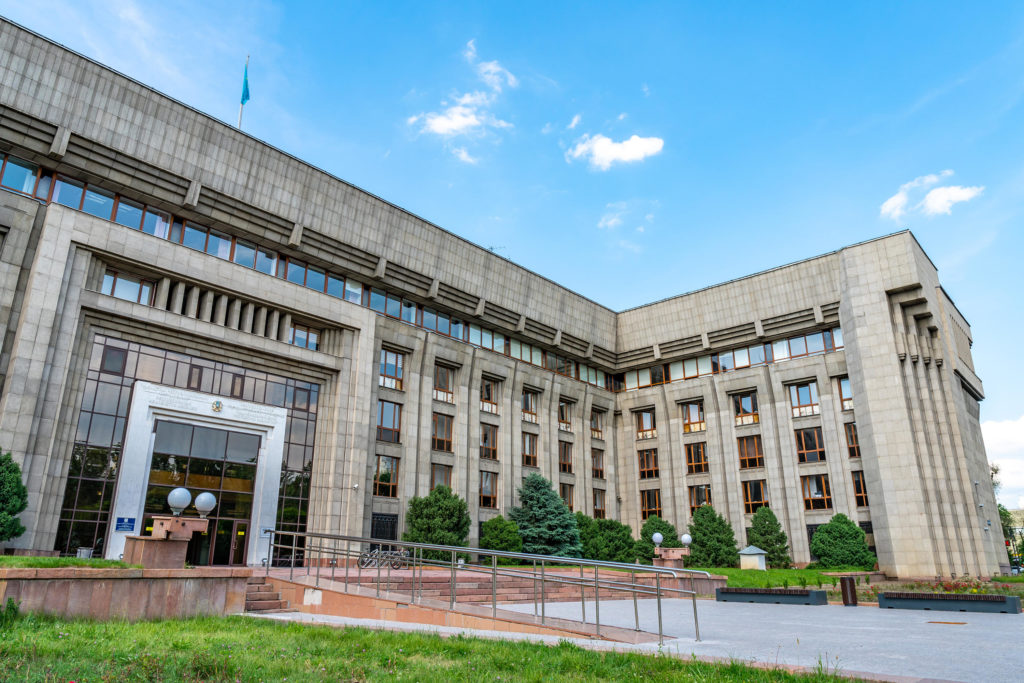NUR-SULTAN
Kazakhstan’s National Bank raised its key policy rate sharply to 13.5 percent from 10.25 percent amid the collapse of the tenge currency.
The bank raised its key policy rate to 10.25 percent from 9.75 percent to curb annual inflation in January.
The rate corridor was kept at plus or minus 1.0 percentage points, the central bank said. The rate on access operations to provide liquidity was raised to 14.5 percent from 11.25 percent and the rate on access operations to withdraw liquidity – to 12.5 percent from 9.25 percent.
“The National Bank of Kazakhstan made an extraordinary decision on the level of the base rate, due to the need to maintain price stability against the backdrop of the realisation of risks from the external sector with a significant deterioration in the geopolitical situation, which was considered as part of the negative scenario and anti-crisis measures,” the central bank said in a statement.
The bank said that its monetary policy, carried out within the framework of inflation targeting, was aimed at preventing the spread of the consequences of an external shock to the country’s economy, ensuring macroeconomic stability and protecting tenge assets.
Second-tier banks are provided with the necessary liquidity within the framework of monetary policy instruments, the bank said.
“The National Bank of the Republic of Kazakhstan remains committed to the free-floating tenge exchange rate regime, reserving the right to conduct foreign exchange interventions in case of excessive volatility to ensure the stability of the financial system,” it said. “At the same time, the flexible exchange rate of the tenge will ensure the safety of gold and foreign exchange assets, the importance of which has increased against the backdrop of the realization of risks from the external sector.”
The weighted average rate of the U.S. dollar on the results of trades on Thursday at the Kazakhstan Stock Exchange amounted to 466.01 tenge. Compared to Wednesday’s trading, the national currency weakened by 28.82 tenge.
Consumer prices in Kazakhstan rose by 8.5 percent year-on-year in January after rising 8.5 percent in December. Monthly inflation in January was 0.7 percent up from 0.6 percent in December. Kazakhstan’s National Bank projected annual inflation in a range of 7.5-8.5 percent in 2021.
The central bank said it expected annual inflation to slow down to 6-6.5 percent by the end of 2022, but did not rule it could reach the target range of 4-6 percent.
“Taking into account the development of the situation in the global economy and current internal factors in Kazakhstan, according to the updated forecast, the National Bank expects a further slowdown in inflation to the level of 6-6.5 percent by the end of 2022,” the bank said last month.
The bank added that due to political events in Kazakhstan in early January and the relatively low base of the first half of 2021, an increase in inflationary processes was possible, the main pressure of which would fall on the first quarter of this year. In the second half of the year, after the expiration of the period of validity (180 days) of measures for temporary regulation of prices for socially important food, fuel and utilities, the risks of accelerating inflation may increase.
Kazakhstan’s economy started recovery last year and expanded by 4 percent backed by a growth in the real sector after the contraction by 2.6 percent in 2020.
The processing industry expanded by 5.5 percent, the construction – by 7.6 percent, while trade increased by 9.2 percent and the transport sector – by 3.6 percent.

